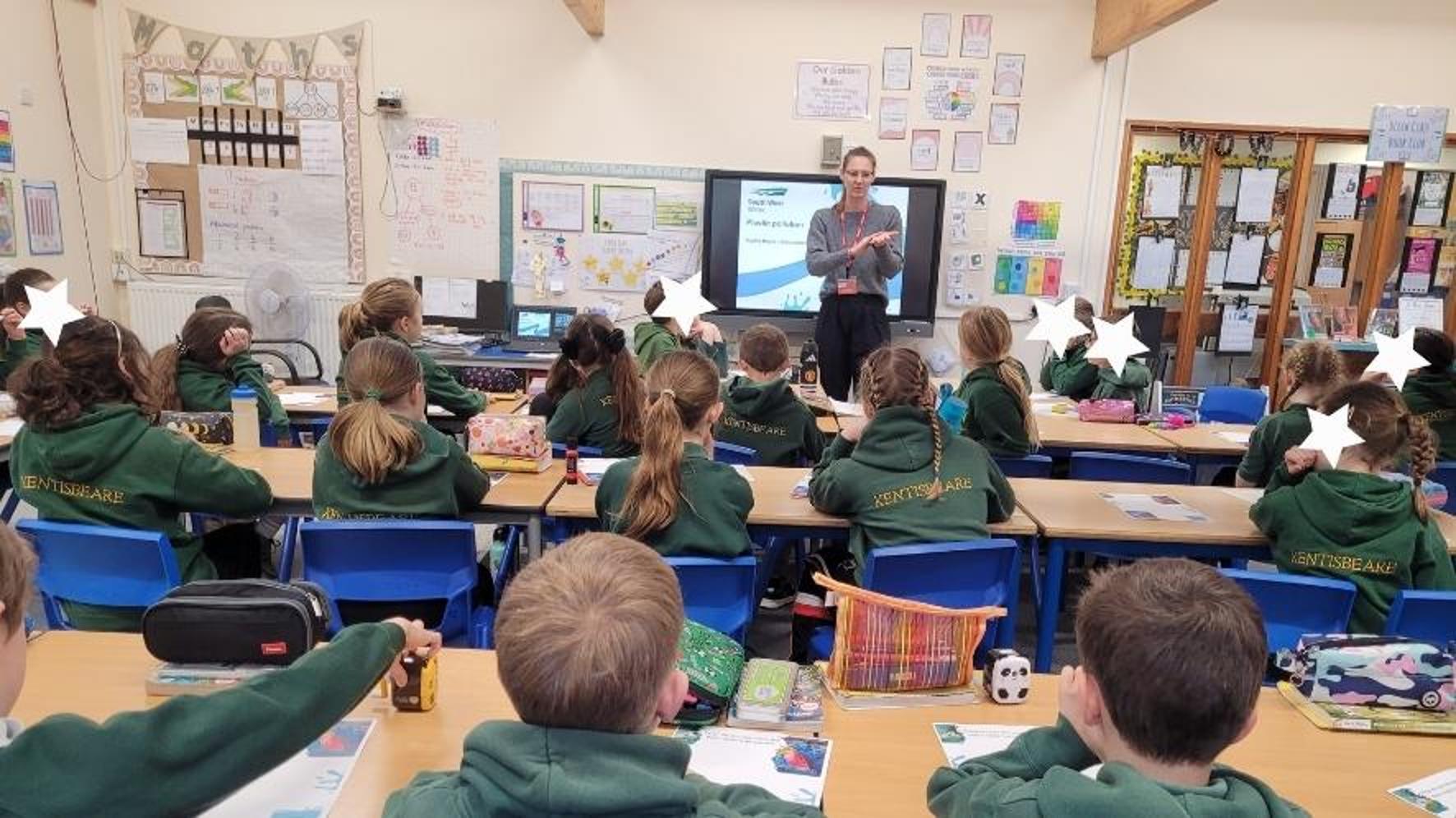Did you know that we carry out education visits in schools? Helping the next generation understand about where water comes from, why it’s important and how to take care of it is something we care about a lot.
We have a wonderful team of education officers who visit schools, providing lessons about water-related subjects.
We asked Sophie a few questions to find out more.
How did you become a Community Education Officer?
I started out as a teacher, working in an independent school for children with autism and behavioural difficulties. I loved working with children, but I wanted a new challenge that took me beyond a single school setting.
I saw this role and thought it would be a great way to challenge myself and develop new skills.
Why is it important for children to know about the water system?
Children are our future and they care about our planet, which is a great start. They take in information like a sponge and can really help influence behaviour change at home.
Pupils know about issues like climate change and they want to help – being careful with water is one thing they can do, and it might even help bring down their water bills! We’re using more water per person than ever before, just as climate change and population growth put extra pressure on the water system. It can only be a good thing to make pupils be aware of these issues.
On the wastewater side, teaching children about things like wet wipes and fatbergs helps prevent sewer blockages. If you teach one pupil, they might possibly go home and teach four family members. It’s a ripple effect.
What do your lessons cover?
Our most-used lesson is on the Journey of Water – which covers the water cycle, water efficiency, drinking water, wastewater and filtration.
Water is relevant to so many other issues, we have developed different lessons to support the curriculum. We cover plastic pollution, climate change, and issues around fast fashion – clothes manufacturing uses a lot of water!
I also give assemblies about topics like water efficiency and how nothing happens without water – everything from staying clean, to the food we eat depends on it.
How do you make learning about water fun?
Children love being hands-on. I have a collection of bottles I bring to lessons – one that shows river water so children can see how it has different things in it like sediment, mud and twigs.
I also do an experiment where we put toilet paper in one bottle, and a wet wipe in another bottle. We screw on the lids then shake – the wet wipe looks more or less the same, while the toilet paper dissolves into the water. This shows very clearly why wet wipes are a problem in the sewers!
We have lots of photos and diagrams that bring the water system to life for pupils. We use activity sheets and lots of discussion – it’s always great to hear pupils’ points of view and it keeps them engaged.
What kind of things do pupils want to know about?
The sewers and what we find down there! Especially when we have pictures of things like toys, furniture etc that end up down there. This is unknown for pupils as they can’t see it for themselves, but it’s fascinating. It’s great to share this knowledge with them. Then they enjoy telling other people, knowing it will be new information to them.
What’s the funniest thing a school pupil has ever asked?
Children are always fascinated by things in sewers. I was once asked “Is there a massive toilet somewhere for bed sheets and shower curtains?” Obviously we had to have a chat about what does and doesn’t go down the toilet!
I’ve also been asked: “Are we drinking dinosaur wee?” To which the answer is – maybe! Not quite dinosaur wee, but the water we drink has been in circulation a long time, so it’s possible the same particles we drink today were also drunk by dinosaurs.
What’s a common misunderstanding children have about water?
That due to the water cycle, we don’t need to save water as it is a continuous cycle. I answer this by saying the population has grown, we are using more water per person per day and climate change is bringing longer spells of drought. So it’s not an unlimited resource.
Children also sometimes think that you don’t need to save water because if you run out, you could just drink something else like milk, orange juice or fizzy drinks. Of course, these all rely on water too.
Sometimes I also find that children think you can drink river water if you make your own filter for it. We always have a discussion about this and all the different things that can impact water quality.
How can children learn about water at home?
Making a mini water butt is a great option. You just cut the bottom off a clean, empty milk carton, decorate and attach it to a tree or fence outside, so it collects rainwater.
Kids also like finding ways to save water at home – by being a leak detective and checking taps and toilets, or by making sure they turn the tap off after them and so on.
Another fun one is creating the three states of matter – you get an ice cube, change it from solid to liquid as it melts on a saucer, then changes state again as it evaporates.
Download an activity pack or book a session
If you’d like to download our activity pack or book a schools session, visit our Education page.
